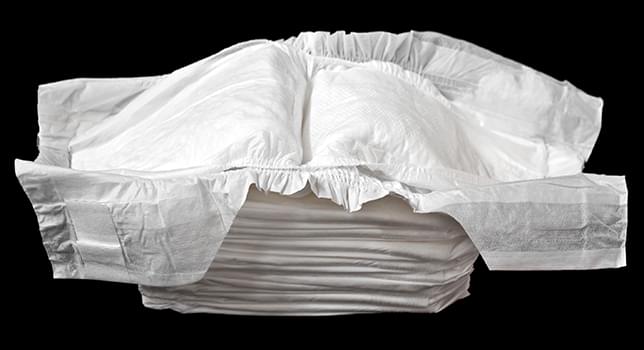The global hygiene components market is the single largest market for nonwovens and is a large market for film and tissue as well. The value of the global hygiene end-use market in 2022 is estimated at $103.4 billion, growing to $126.3 billion by 2027, according to a new report from Smithers,
The Future of Hygiene Components to 2027. Annual growth rate (2022-27) is projected at 4.1%. Globally, hygiene end products are relatively recession proof and as such are projected to grow at about 20–25% faster than projected global GDP through 2027.
The number of finished products using hygiene components is estimated at 631.2 billion in 2022 and are projected to grow to 783.4 billion by 2027. Projected annual growth rate (2022-27) is 4.4%. Both the number of units as well as the value is for finished products (for example, diapers, feminine hygiene pads) rather than for individual components, of which each finished product may have multiple hygiene components.
Evolution of hygiene products
The global hygiene components market is the single largest market for nonwovens and is a large market for film and tissue as well. Many hygiene products, like baby diapers and feminine hygiene products, become necessities once introduced. But these necessities must evolve as well. Lower cost, higher performance, more sustainable are all global issues which hygiene products and their components must address. The need for an evolved hygiene product drives the need for new and improved components. Some components are truly new; cloth-like backsheets, breathable backsheets and pulp-less cores did not exist ten years ago. Some are improved; acquisition layers are much more sophisticated, and topsheet is now 8–10 grams per square metre instead of 20. The global hygiene market will continue to be a huge consumer market for many years to come and the demand for new, improved and evolved components will continue as well.
Supply chain and end users
The supply chains for hygiene end-use products are extremely complex in actual operation, with many specialized and technically complex components required for products like diapers and some adult incontinence products. Feminine hygiene pads have fewer components, though these are specialized as well. Tampons have the fewest components and the simplest supply chain.
Some of the largest differences between adult incontinence products and similar products for other markets is the scale and the actual consumer. For example, adult incontinence briefs are very similar to baby diapers, with all of the same components. Adult incontinence underwear is similar to toddler training pants. Adult incontinence pads are similar to feminine hygiene pads (so much so that there are estimates that as much as 50% of North American women use feminine hygiene pads for stress incontinence). Finally, adult incontinence underpads are similar to hospital/medical underpads.
Regional demand
For hygiene components (not necessarily finished goods or nonwovens), Europe has the highest average price per tonne while South America has the lowest. Asia has the second highest price per tonne and the highest volume, resulting in it having the highest market share by sales value. By 2027, projections are for higher pricing per tonne (driven partially by expected inflation) in Europe and North America, while Asia (assisted by lower inflation in China) is projected to see some price decreases for hygiene components.
Sustainability in hygiene components
Despite a global drive for increased sustainability and a decrease in the use of plastics, the amount of plastics (polymers and fibres) in hygiene components will actually increase slightly between 2022 and 2027. The large installed nonwoven production base for polymer and plastics-based materials, a lack of acceptable products based on more sustainable materials, and the lack of capacity for both materials and nonwoven processes which are more sustainable or plastics-free contribute to the issue.
Fluff pulp is the most sustainable raw material used in hygiene products. With diaper markets either not growing or growing very slowly, sustainability has become an issue especially in the developed, mature markets. In the most competitive markets, sustainability claims are an advantage; most major producers are working on sustainability.
